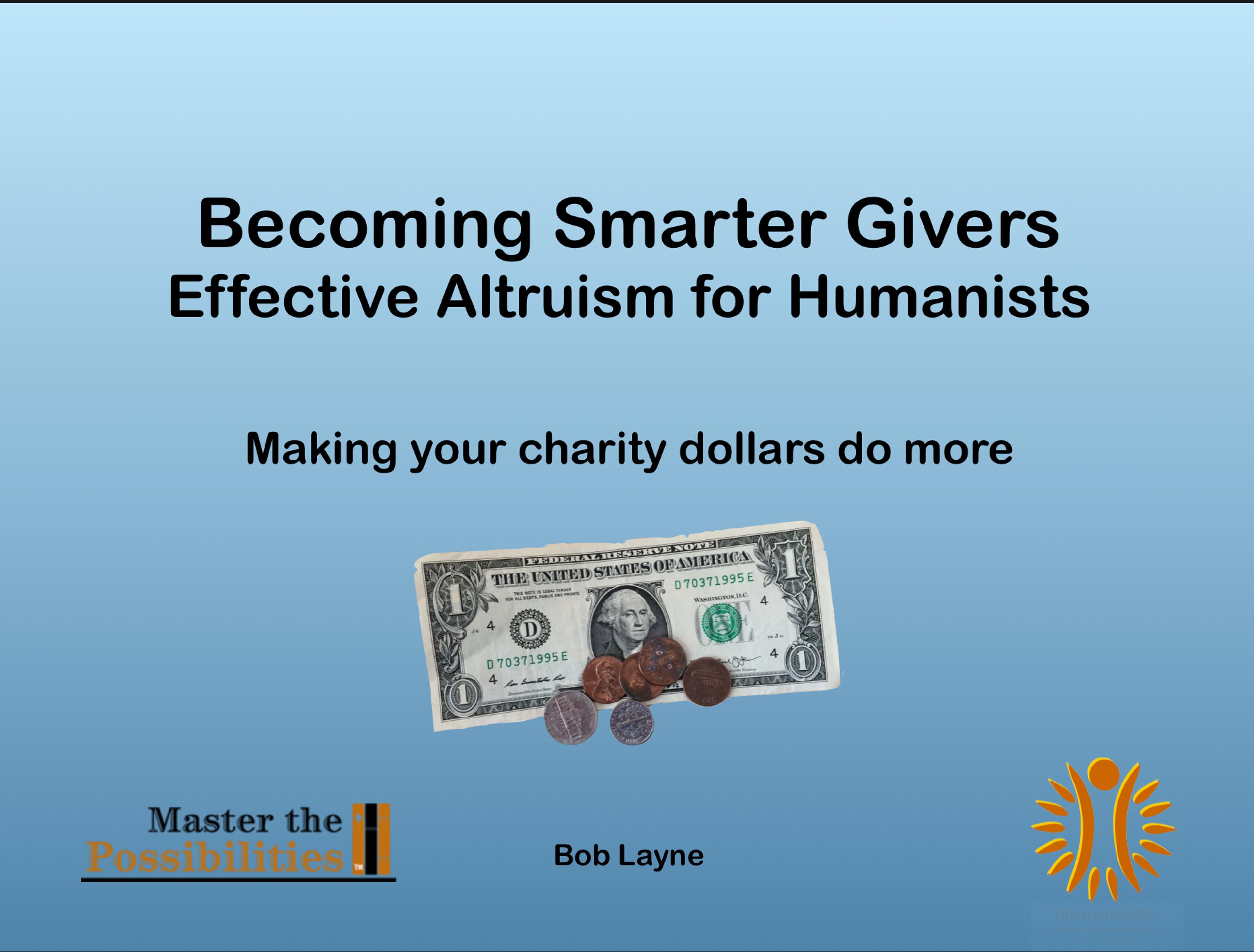80-year-old Bob Layne thought others should know about effective giving. So he made it happen.
.jpg?w=3840&q=75&fit=clip&auto=format)
Bob gives an effective giving talk at Master the Possibilities, the learning center of his retirement community.
“In 2015, I heard a podcast with Will MacAskill discussing his newly published book Doing Good Better. I bought it immediately and after reading it I found it was a book that truly changed my life. It introduced me to a way of thinking about charitable giving that was logical, enlightening and motivational...I wanted for others to have a similar experience.”
Those are the words of Bob Layne, an 80-year-old retired professor who lives with his wife in a retirement community in Florida, one with a learning facility that presents courses and lectures for residents. After learning about effective giving, he decided others should know about it, and that he could help. He’s now giving talks on effective giving at the learning center of the 10,000+ member retirement community where he lives.
We were so moved to hear about Bob’s initiative that we asked him to write a short piece on it for our blog. Here’s what he wrote:
by Bob Layne
“Becoming Smarter Givers” is the name of my presentation about EA.
I am 80 years old and a retired professor. Like many seniors, my wife and I have found our way to a retirement community in Florida. One of the attractions of this particular community is the senior learning facility that presents many “courses” and single topic lectures over the year. In 2015, I heard a podcast with Will MacAskill discussing his newly published book Doing Good Better. I bought it immediately and after reading it, I found it was a book that truly changed my life. It introduced me to a way of thinking about charitable giving that was logical, enlightening and motivational.
I wanted to do something more than just contribute money, which we eagerly do; I wanted for others to have a similar experience. I approached the education center and proposed a two hour program on EA. My goals were to stimulate the audience to rethink some of their decision processes about charities and to adopt some of the EA philosophy. I have developed a Keynote presentation for this purpose. I provide handouts with an outline of the presentation as well as two pages of resources and references with links for further exploration.
The presentation is divided into two sections. In the first half, I define effective altruism, biases that impact altruistic giving and Singer's moral imperative — all with examples and a few short videos to enhance understanding. The second part is about action steps: how much to give, which causes might excite their passion and which organizations within those causes to consider for contributions. (Again with a few short videos and several examples.) I distinguish between charity evaluators that focus on financial and organizational structure data to provide ratings information and those like Give Well which focus on results.
I have given this presentation about five times through our learning facility, each time with about 35 people attending. This is considered good attendance since there are so many competing classes and activities here. I have also been invited to give the presentation to the Humanists and Freethinkers groups here and in some other senior communities.
So what's the bottom line? I don't know because I do not do any follow-up. The presentations are well received and there are many questions. The participants comment that the ideas were enlightening and informative. They all take the handouts and some utilize the resources to seek more information. All I know is that I was really excited when I was introduced to EA and I feel it is part of my responsibility to the EA community to introduce others to EA.
Thanks so much to Bob for his incredible initiative, and for sharing it with us! We're certainly inspired, and we think our readers will be too.

The title slide from Bob's talk